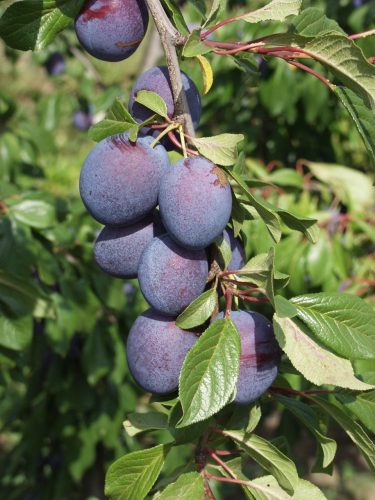Plums belong to the stone fruits (drupes). Plums should not be pruned in the winter, when the trees are very susceptible to silver leaf, a fungus.
You are viewing the mobile-adapted version of the page.
The one for tablets, laptop and desktop also provides general information, such as origin and cultivation.
Plum – (Prunus domestica) belong to the stone fruits (drupes). Plums should not be pruned in the winter, when the trees are very susceptible to silver leaf, a fungus. Pruning can be done after flowering in spring or immediately after they bear fruit. In addition, pruning wounds heal faster in spring and fall than in winter.
Clean up fallen plums in the fall to avoid frequent visits from wasps.
Because plum trees, like all stone fruit trees, are susceptible to silver leaf, the trees should be pruned not in winter but in spring (after flowering) or after harvest (August, September). Prune away branches that hang too low, as well as intersecting branches.
Bugs
Ripe fruits are eaten: wasp.
Deformed and discolored leaves: aphids.
Dot-shaped spots on the leaves, mites on the underside: red spider mite (Tetranychus urticae).
Feeding on sprouting buds and young leaves: caterpillars of the winter moth (Operophtera brumata).
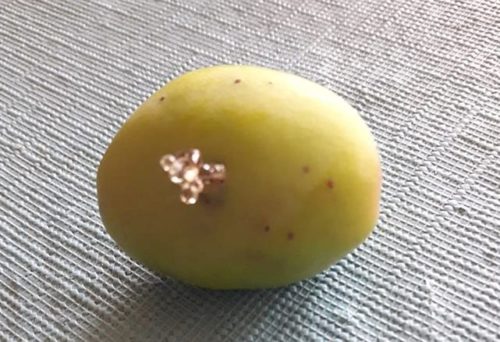
Resinous droplet on plum: plum fruit moth (Grapholita funebrana).
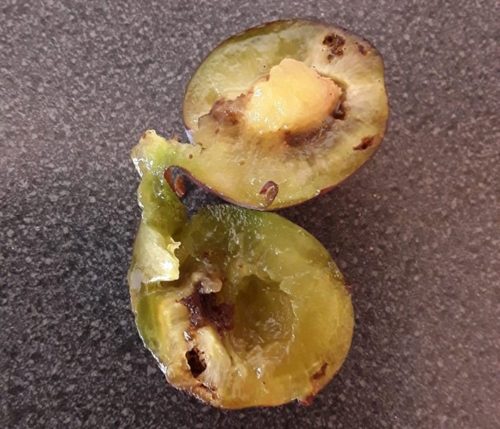
The flesh is infested and contaminated (caterpillar droppings) by larvae of the plum fruit moth (Grapholita funebrana).
Fungi & diseases
Reddish spots on leaves turn to brown, mesophyll dies, holes fall in leaves: Shot hole disease (Stigmina carpophila).
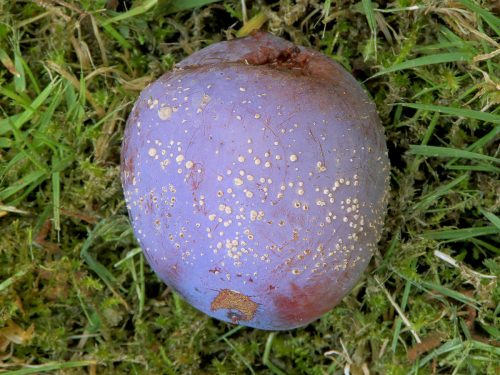
Fungal spores on ripe plum: Brown rot (Monilinia spp.).
Leaves take on a silvery sheen: silver leaf (Chondrostereum purpureum).
Leaf early falls off, brown gum appears on dead bark: Bacterial canker (Pseudomonas syringae).
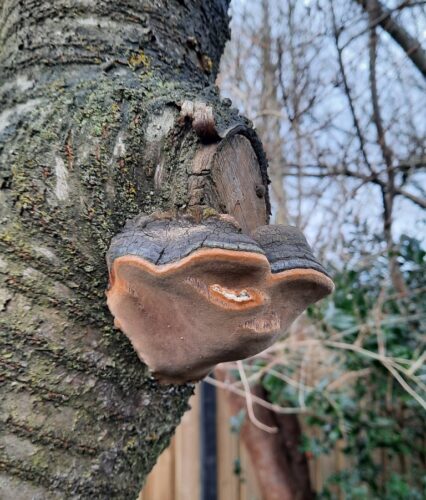
Brownish-yellow fungi on the branches and trunk: cushion bracket (Phellinus tuberculosus).
Other
Frost rings or rough spots on plums: frost damage. Early-blooming fruits such as cherry, plum and peach are susceptible to frost. Frost damages the blossom, reducing fruit setting, fruit falls from the tree prematurely (‘moulting’). Unopened flower buds tolerate a few degrees of frost.
Vertical cracks in the bark of the trunk: Bark cracks.
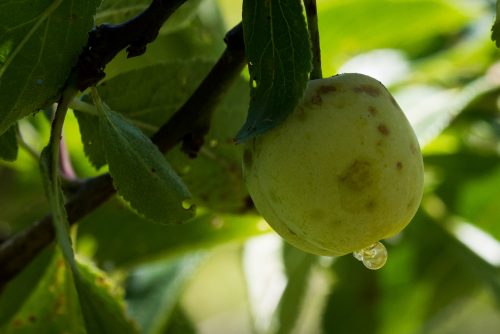
Drip of sugar juice on the ripening fruit: a lot of rain follows a dry period, causing the fruit to burst and sugar juice to escape. Not to be confused with the resinous drop caused by the plum fruit moth. Plums affected by the
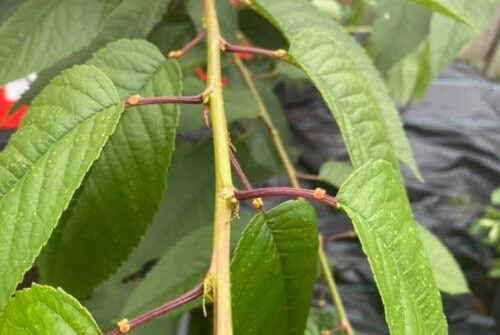
There are thickenings on the petioles. These are nectaries located outside the flowers. These extrafloral nectaries occur on bracts, supporting leaves, petioles and leaves. These nectaries attract wasps and ants protecting the plant from pests. The honey from these nectaries is of lower quality than that of the nectaries inside a flower. Extrafloral nectaries are found in prunus species (cherry tree), acacia and passion flowers.
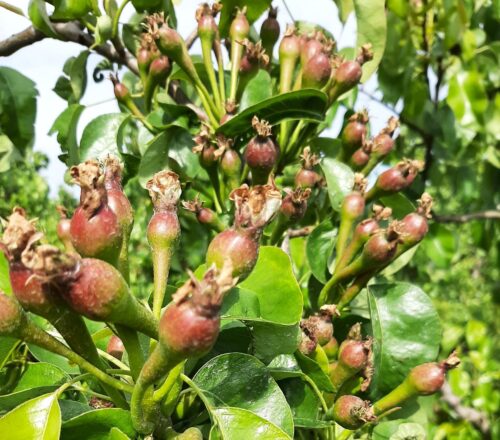
Fruiting follows after flowering. Usually there is an excess of small fruits. Between late May and mid-June, however, many plums fall off: the June molt. A natural process in which the tree rejects all weak fruits. See also fruit thinning.

